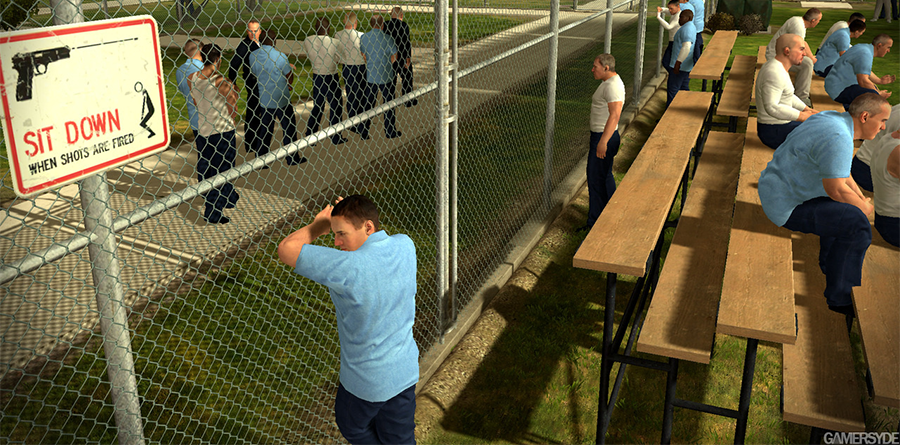For those of us who feel trapped in our worlds, the concept of being able to ‘do anything’ or ‘go anywhere’ can be intoxicating. As such, video games often advertise an unadulterated sense of freedom to sate our innate wanderlust. For some, that freedom can be empowering. For others, it’s soothing. But what about the masochists among us who would choose imposition over liberty? When is restriction a practical success in gameplay design, and when does it fall short?
Resident Evil 4 Gets Gameplay Restriction Right

No two games represent the dichotomy of good and bad gameplay restriction as well as Resident Evil 4 and Silent Hill 2 respectively. Despite sharing an identical genre, these two games are fundamentally dissimilar, mostly because of how the core gameplay restricts players differently. Resident Evil 4 gets it right – scarce resources, overwhelming odds and the inability to strafe create situational tension.
Players feel fear when they miss shots and waste ammo, compounded by chainsaw maniacs and a lack of mobility. Despite all this, Resident Evil 4’s gameplay is fluid and responsive. It still holds up today.
Silent Hill 2 is a Bad Example for Gameplay Restrictions

It’s at this hurdle that Silent Hill 2 falls flat. Now, I love Silent Hill 2, but its impositions on gameplay are plain bad. Not only is the control scheme terrible, but the awful animations lack a sense of weight and the unresponsive movement makes for an incredibly clunky experience.
I’ve heard it said that these were conscious design choices, that the gameplay represents protagonist James Sunderland as an everyman who lacks the combat expertise of Resident Evil 4’s Leon Kennedy – but this argument holds no water.
James can fire weapons at pinpoint accuracy with no recoil, and reload just about every type of firearm in a very short amount of time. What James can’t do is walk in a straight line. The restrictions put on the player don’t feel deliberate, and they certainly aren’t congruous with the everyman model.
Whilst I would consider Silent Hill 2 a scarier game overall thanks to its horrifying atmosphere and distressing scenes, it lacks the marriage between fear and solid gameplay that Resident Evil 4 possesses. Instead, it accomplishes one at the expense of the other.
Restrictions Can Present itself as Rewarding Gated Content

Of course, restriction doesn’t necessarily have to come in the form of fundamental gameplay abilities (or a lack thereof). Almost every game ever made features something to restrict players from progressing to late game areas before they were intended to. Super Mario 64 is exemplary in this regard. Peach’s Castle is full of mysterious doors that can only be unlocked using star power, which can be obtained from any of the game’s levels.
Such restrictions not only allow developers to streamline the experience into a more focused game with controlled difficulty progression, but also fill the player with a sense of intrigue and reward once they finally unlock these special areas.
Compare this to something like the progress restraints in No Man’s Sky and it’s a very different story. Exploring the universe is an absolute chore in No Man’s Sky because the restrictions contribute nothing to the game. It doesn’t make for a focused experience (nor could it given the nature of procedural generation). Instead, these restrictions come in the form of recharging all of your equipment over and over again.
It grinds the game to a halt, forcing players to shoot asteroids for isotopes when the ship thrusters run out of fuel, or sprint across acres of nothingness to pick flowers. This puts a wall between the player and universal exploration. The restrictions never present new or particularly rewarding obstacles like in Super Mario 64. These empty, repetitive filler segments create a transparent illusion of achievement and substance, and worst of all they’re at arms with the game’s singular purpose – liberty on a universal scale.
Restrictions can be Liberating

That said, liberty and restriction are not necessarily antithetical when it comes to game design. In truth, restriction can be a liberating and empowering force in the right context, particularly when players can overcome these restrictions. In the Grand Theft Auto games for instance, players are able to traverse a huge environment at will, but police enforcements will be dispatched should the player choose to break the law.
Depending on the severity of your crime(s), the police will try to restrict the player from committing more crime in different ways. At this point, the player has several choices: they can outwit the police, using different stealth elements like hiding in foliage or changing vehicles to evade pursuit. They can outpace the officers, getting out of their line in sight with speed alone.
Lastly – and perhaps most popularly – players can return fire at the police, triggering higher and higher levels of response until they either die or choose to flee. These choices are interchangeable with one another and can be engaged at any time, which only contributes to the overwhelming sensation of freedom a player feels when they avoid the consequences of their actions. As such, Grand Theft Auto is a fantastic example of how restriction can ironically be used to make players feel free.
Matter of Balance
When developers and marketers romanticise the freedom to do as one chooses in their games, they usually infer either a lack of restriction, or that restriction is a bad thing. Both of these things are untrue. Adventures need obstacles, and obstacles need to be fuel the adventure in sensible and affable ways. Restriction, like liberty, is a good thing with balance – and you can’t break free if you’re not on a leash.









